Terror in 3-D . . . Reaching out from the screen to seize you in its grasp!
Look out! Living in the 1950s, at least inside a movie theater, was a dangerous venture at the time. Anything could threaten life and limb. Especially dangerous were the ferocious—and always gigantic—insects, often stimulated by residual radiation from atomic bomb testing—The Deadly Mantis (1957), Tarantula (1955), The Black Scorpion (1957), the locusts in Beginning of the End (1957) and, the best-made film of all, Them! (1954) and those enormous ants.
Any innocent cinema viewer in those traumatic days could be menaced as well by non-insects—the octopus in It Came from Beneath the Sea (1955), Attack of the Crab Monsters (1957) and a gill-man in The Creature from the Black Lagoon (1954). Even something ordinary could become a marauding giant when a human shrinks to a few inches in height, as Grant Williams does after being enveloped in a pollutant fog. His character in The Incredible Shrinking Man (1957), beyond being trapped in a flooded basement, is imperiled by a common spider and the family cat.
Then there are the alien visitors from other worlds. One of the best of these films from the 1950s is, without doubt, The War of the Worlds (1953). (The Day the Earth Stood Still [1951] is in a class by itself and, technically, outside this genre.) Seen only fleetingly, the creatures in War of the Worlds have slender, undernourished-looking arms and three thin “fingers,” with suction cup tips. They come to appropriate the Earth, for their planet’s population is threatened by a failing atmosphere, maybe even caused by . . . global warming? In Invaders from Mars (1953), extraterrestrials come to possess the minds of the Earthlings while leaving their bodies unchanged. Their intent is clearly not good.
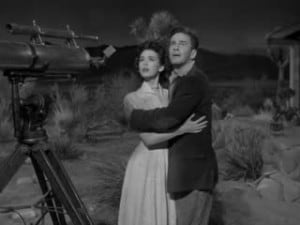 In It Came from Outer Space (1953), the aliens which crash to Earth in a ship taken to be a meteor also possesses minds, leaving bodies unaltered. Quite differently, however, they neither want to harm nor assist their unknowing hosts. These creatures are benign and indifferent: they have landed on Earth by accident and are controlling the locals to assist in repairs to their ship. In the climax, they are even sent on their way with help from the benevolent lead character.
In It Came from Outer Space (1953), the aliens which crash to Earth in a ship taken to be a meteor also possesses minds, leaving bodies unaltered. Quite differently, however, they neither want to harm nor assist their unknowing hosts. These creatures are benign and indifferent: they have landed on Earth by accident and are controlling the locals to assist in repairs to their ship. In the climax, they are even sent on their way with help from the benevolent lead character.
These aliens don’t seem to be much of a threat, either to Earth or to the occupants of those seats in the movie theater. In contrast to other ’50s movies, the film is itself somewhat benign, low-key—and no one dies. So how could this particular outer space horror film be of any interest, prompt those necessary thrills and chills, inspire awe over the dazzling special effects, for an audience sensitized by the Cold War, nuclear threats and bomb shelters, in this, the scariest decade of the twentieth century?
At the time, It Came from Outer Space was visually satisfying and financially successful, the first Universal film in 3-D—a big hit—and a movie that since, like so many in this genre, has become a cult film. If the screen showed what was then considered state of the art special effects—if the term can really apply here—compared with the sophisticated CGI achievements of today, this 1953 alien invasion experience creaks, moans and groans with its crudeness, its quaint “special effects,” its sometimes tacky “marvels.” But that judgment is decidedly unfair: the proper perspective is to view the film in the context of the times, and from that standpoint the visuals are, indeed, quite impressive, sure to scare the average fifteen-year-old of the time out of that seat.
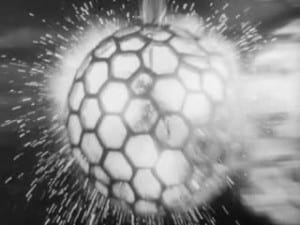 Behind the Universal trademark, the eerie sound of the ondes martenot. A meteor streaks across the sky, then comes straight for the audience, the first of many in-your-face 3-D effects. Strange, this meteor isn’t rock-shaped or rough-edged but seems to be an engineered sphere consisting of many interlocking hexagons. As the globe crashes, an enormous explosion and an erupting title: It Came from Outer Space.
Behind the Universal trademark, the eerie sound of the ondes martenot. A meteor streaks across the sky, then comes straight for the audience, the first of many in-your-face 3-D effects. Strange, this meteor isn’t rock-shaped or rough-edged but seems to be an engineered sphere consisting of many interlocking hexagons. As the globe crashes, an enormous explosion and an erupting title: It Came from Outer Space.
(Perhaps two miscalculations and a sequence misalignment. Deprived of delayed suspense, already the meteor is revealed to be of alien design and the eerie theremin is, perhaps, heard prematurely. And the story begins before the story has begun, so to speak. Time, now, takes a step or two back——) It’s night in the town of Sand Rock, Arizona. “The desert blankets the earth, cooling, resting for the fight with tomorrow’s sun,” as resident John Putnam (Richard Carlson) narrates. He’s a writer and amateur astronomer, complete with the requisite props Hollywood thinking dictates are associated with these two professions, a pipe and a telescope. Putnam and his girlfriend, Ellen Fields (Barbara Rush), have stepped outside his small desert dwelling and are viewing the stars when the meteor lands.
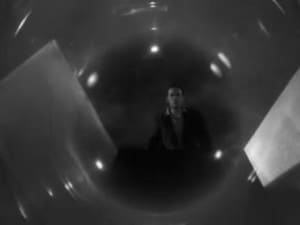 Time repeats itself and the meteor has to crash all over again, complete with the same 3-D plunge toward the camera. Now, too, the viewpoint changes incongruously and just the camera, not the stargazers, who are back at Putnam’s house, wanders into the crater—the ship with its hexagon door, rising smoke and fumes and a short, long-haired, one-eyed creature with a large forehead, the ondes martenot quivering away. The jelly-like being glides over the ground and leaves a sparkling residue. To simulate the round, single-eye perspective of the creature, a bubble of glycerin was created over the camera lens; the shots are brief, as the bubble will burst quickly. How though, one might wonder, can a single eye, of a monster or otherwise, see three-dimensionally?!
Time repeats itself and the meteor has to crash all over again, complete with the same 3-D plunge toward the camera. Now, too, the viewpoint changes incongruously and just the camera, not the stargazers, who are back at Putnam’s house, wanders into the crater—the ship with its hexagon door, rising smoke and fumes and a short, long-haired, one-eyed creature with a large forehead, the ondes martenot quivering away. The jelly-like being glides over the ground and leaves a sparkling residue. To simulate the round, single-eye perspective of the creature, a bubble of glycerin was created over the camera lens; the shots are brief, as the bubble will burst quickly. How though, one might wonder, can a single eye, of a monster or otherwise, see three-dimensionally?!
With John and Ellen, friend Pete (Dave Willock) flies his helicopter to the site and John descends into the crater, getting only a glimpse of the creature. Soon after, a landslide buries the spaceship, and when John relates what he alone saw, the townspeople, including the sheriff (Charles Drake), doubt his story.
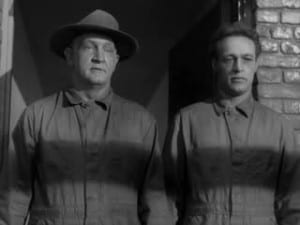 Before long, local people appear changed, not themselves, trance-like, with vacant eyes, including two telephone repairmen (Joe Sawyer and the future professor in Gilligan’s Island, Russell Johnson). These changes suggest to the sheriff that maybe Putnam is right and he organizes a group to find the invaders.
Before long, local people appear changed, not themselves, trance-like, with vacant eyes, including two telephone repairmen (Joe Sawyer and the future professor in Gilligan’s Island, Russell Johnson). These changes suggest to the sheriff that maybe Putnam is right and he organizes a group to find the invaders.
Putnam, wanting a peaceful solution, finds the entrance to an abandoned mine and meets the aliens, who have assumed human form, so hideous do they think they would otherwise appear to humans. They reveal that they intend no harm, had landed by accident and are copying local humans to help with their repairs, stealing electronic items from the hardware store. The original humans are safely imprisoned for the time being.
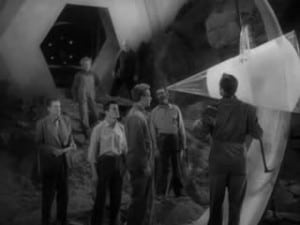 John seals off the mine entrance to protect the visitors and allow them time to complete their repairs. When their ship is ready, they release the missing townspeople and blast off. Ellen asks if the aliens are gone for good. “No, just for now,” John replies. “It wasn’t the right time for us to meet. But there’ll be other nights, other stars for us to watch. They’ll be back.” (This three decades before Arnold Schwarzenegger said “I’ll be back” in The Terminator.) In writing the screenplay, Harry Essex used almost verbatim the story outline and dialogue submitted by science fiction writer Ray Bradbury.
John seals off the mine entrance to protect the visitors and allow them time to complete their repairs. When their ship is ready, they release the missing townspeople and blast off. Ellen asks if the aliens are gone for good. “No, just for now,” John replies. “It wasn’t the right time for us to meet. But there’ll be other nights, other stars for us to watch. They’ll be back.” (This three decades before Arnold Schwarzenegger said “I’ll be back” in The Terminator.) In writing the screenplay, Harry Essex used almost verbatim the story outline and dialogue submitted by science fiction writer Ray Bradbury.
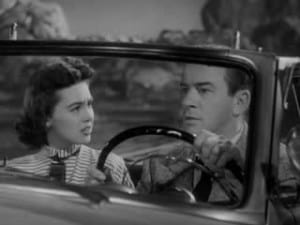 The three main stars render solid performances, all around. Richard Carlson’s usual ability to register intelligent integrity in any number of roles convincingly comes through here as an author and amateur astronomer. Although he is best remembered for his roles in this and a few other science fiction films, including The Creature from the Black Lagoon and The Magnetic Monster (1953), Carlson did star in some Class A films. In King Solomon’s Mines (1950) he played opposite Deborah Kerr, though as her brother and won back wife Barbara Stanwyck in All I Desire (1953). He had a bit, uncredited part in The Day the Earth Stood Still.
The three main stars render solid performances, all around. Richard Carlson’s usual ability to register intelligent integrity in any number of roles convincingly comes through here as an author and amateur astronomer. Although he is best remembered for his roles in this and a few other science fiction films, including The Creature from the Black Lagoon and The Magnetic Monster (1953), Carlson did star in some Class A films. In King Solomon’s Mines (1950) he played opposite Deborah Kerr, though as her brother and won back wife Barbara Stanwyck in All I Desire (1953). He had a bit, uncredited part in The Day the Earth Stood Still.
Carlson’s girlfriend in It Came from Outer Space, Barbara Rush, in many ways never developed into a full-fledged star, or, more accurately, was never allowed to become anything more than a lovely ornament in her films, though she appeared opposite some of Hollywood’s big-name actors—Kirk Douglas, Paul Newman, Richard Burton, Marlon Brando and Montgomery Clift. She herself understood her situation better than any one and wisely summed it up: “I can safely say that every movie role I was ever offered that had any real quality went to someone else.”
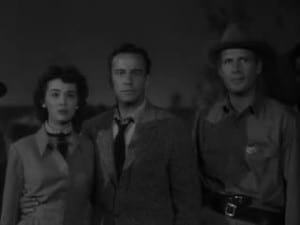 Like so many of Rush’s roles, Charles Drake as the sheriff in the film was typical, that is, a part that tended to blend into the background. Who remembers him in The Maltese Falcon, The Man Who Came to Dinner, Harvey, Winchester 73 or Valley of the Dolls? Well, he was in them—and in more than eighty other films. During his screen career, between 1939 and 1975, he never became a star.
Like so many of Rush’s roles, Charles Drake as the sheriff in the film was typical, that is, a part that tended to blend into the background. Who remembers him in The Maltese Falcon, The Man Who Came to Dinner, Harvey, Winchester 73 or Valley of the Dolls? Well, he was in them—and in more than eighty other films. During his screen career, between 1939 and 1975, he never became a star.
One semi-famous artist involved with the film, though his is hardly a household name, is the producer, William Alland. Starting out as an actor, he made six theatrical films before becoming a producer in 1951. Besides It Came from Outer Space, he produced some of Universal’s most famous films of this type, from the better ones—The Creature from the Black Lagoon and This Island Earth (1955)—to the worst—The Mole People (1956) and The Deadly Mantis. More famously, Alland served as both the newsreel narrator and the inquiring reporter, Jerry Thompson, in Citizen Kane (1941).
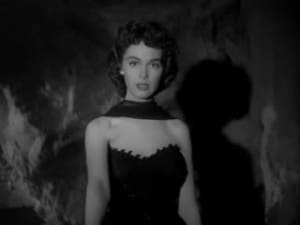 The main credits for It Came from Outer Space unusually come at the end of the film. Listed for “Music Direction” is the name of Joseph Gershenson. Like Leo Forbstein, for many years at Warner Bros. and often mistakenly assumed to be a composer, Gershenson was only the head of the music department. During his time at Universal, an actual composer’s name was rarely listed, unless he wrote the entire score, and then only in small print along with the film editor, art director and make-up man. By contrast, in Warner’s films, starting in the ’30s, a single composer was assigned a film and his name was almost always listed, frequently on a frame to himself, especially if he was Erich Wolfgang Korngold, Max Steiner or Franz Waxman. In fact, during the ’30s and ’40s, Warner Bros. had the best music department and the best composers in Hollywood.
The main credits for It Came from Outer Space unusually come at the end of the film. Listed for “Music Direction” is the name of Joseph Gershenson. Like Leo Forbstein, for many years at Warner Bros. and often mistakenly assumed to be a composer, Gershenson was only the head of the music department. During his time at Universal, an actual composer’s name was rarely listed, unless he wrote the entire score, and then only in small print along with the film editor, art director and make-up man. By contrast, in Warner’s films, starting in the ’30s, a single composer was assigned a film and his name was almost always listed, frequently on a frame to himself, especially if he was Erich Wolfgang Korngold, Max Steiner or Franz Waxman. In fact, during the ’30s and ’40s, Warner Bros. had the best music department and the best composers in Hollywood.
Among the three uncredited composers who actually worked on It Came from Outer Space are Irving Gertz, Herman Stein and Henry Mancini. During his six or so years at Universal, Mancini scored comedies—always uncredited—for Bud Abbott and Lou Costello, Ma and Pa Kettle and Francis the Talking Mule, and a number of the sci-fi movies mentioned, including Tarantula and The Creature from the Black Lagoon. Later, beyond his fame for “Moon River” from Breakfast at Tiffany’s and the Pink Panther theme, he became equally competent in drama, scoring, for example, the dark menace of Experiment in Terror (1962), starring Glenn Ford and Lee Remick, who are trying to capture psychotic bank robber Ross Martin.
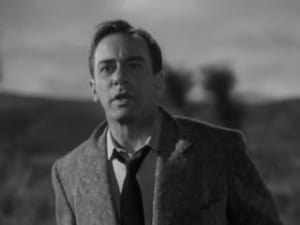 In his autobiography, Did They Mention the Music?, Henry Mancini provides detailed, rather interesting insights into the music department at Universal: “ . . . composers Frank Skinner and Hans Salter . . . were given complete pictures to score; and, at my level, . . . we . . . were assigned the overflow, several of us working on various parts of the same picture. Joe Gershenson would call in Herman Stein and me to look at a picture. [We] would decide where the music would go . . . I would get my five reels and Herman his five. If the love theme fell in his half of the picture, he’d write it. And if he used it in the first half of the picture, I would use it in the second half . . .
In his autobiography, Did They Mention the Music?, Henry Mancini provides detailed, rather interesting insights into the music department at Universal: “ . . . composers Frank Skinner and Hans Salter . . . were given complete pictures to score; and, at my level, . . . we . . . were assigned the overflow, several of us working on various parts of the same picture. Joe Gershenson would call in Herman Stein and me to look at a picture. [We] would decide where the music would go . . . I would get my five reels and Herman his five. If the love theme fell in his half of the picture, he’d write it. And if he used it in the first half of the picture, I would use it in the second half . . .
“Assigned to one of the Francis the Mule or Kelly the Dog pictures . . . , you’d go to the library and [say], ‘Give me the music from so-and-so and so-and-so’—pictures you thought might have some things you could use. You’d get a big stack of music by eight or ten different composers and proceed to create a score out of it.”
By the early ’50s, television had been making serious, profit-crunching inroads into theatrical films, and 3-D was one way of providing what that little box in the living room couldn’t. In its earliest, most primitive days, 3-D had many drawbacks. First of all, not all local theaters could afford the required two projectors. In addition, one projector might run faster or slower than the other, eventually disrupting the synchronization and making the screen unwatchable. If one of the films had a splice, then an equal number of frames had to be spliced from the other film.
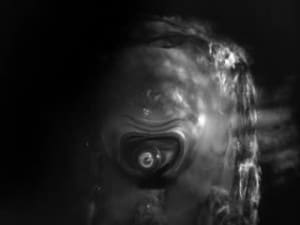 Before 3-D could wear out its welcome—as it would, temporarily—it was replaced by CinemaScope, the wide-screen process developed by 20th Century-Fox. Besides the wider screen, it offered the illusion of depth, and without the annoying glasses. Three-D, however, would make a comeback in a big way with its highly improved reintroduction in the ’80s and ’90s, and especially in the 2000s with the likes of Chicken Little, Aliens of the Deep and Avatar.
Before 3-D could wear out its welcome—as it would, temporarily—it was replaced by CinemaScope, the wide-screen process developed by 20th Century-Fox. Besides the wider screen, it offered the illusion of depth, and without the annoying glasses. Three-D, however, would make a comeback in a big way with its highly improved reintroduction in the ’80s and ’90s, and especially in the 2000s with the likes of Chicken Little, Aliens of the Deep and Avatar.
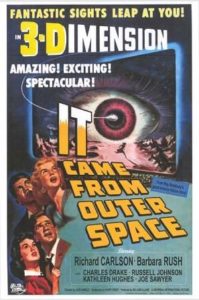
“Invasion of the Body Snacthers” should be included as one of the best.
Agree!!!